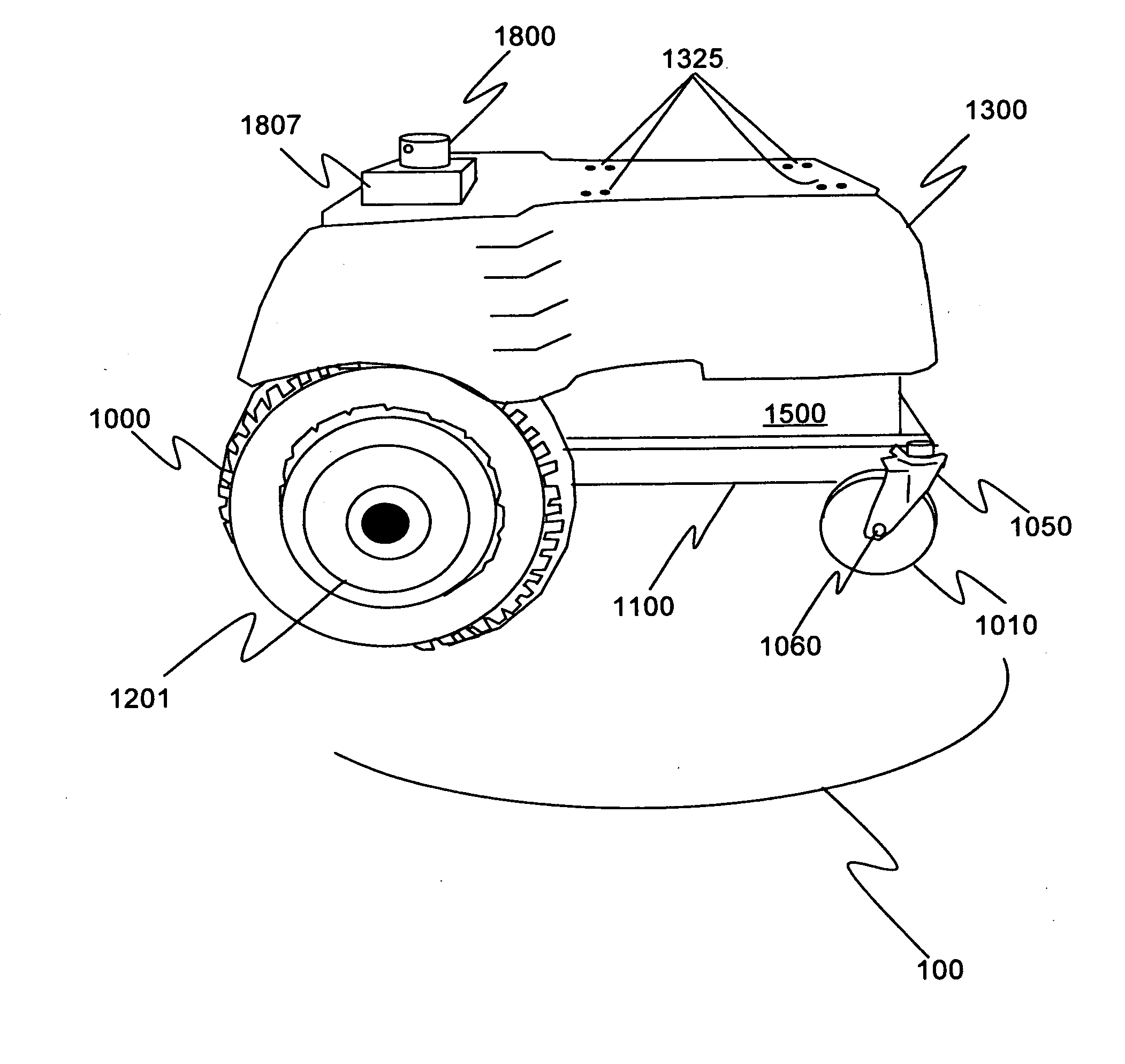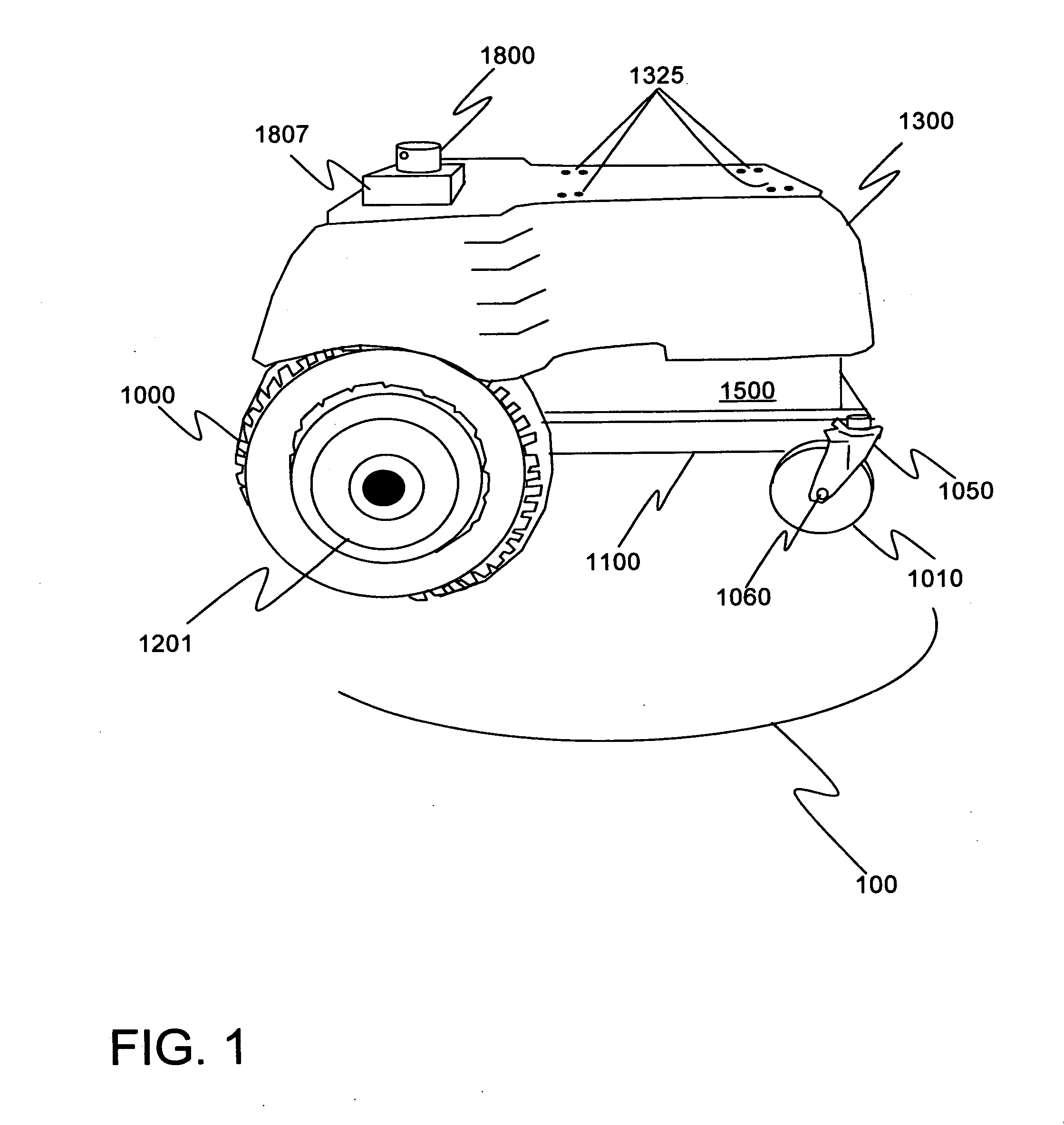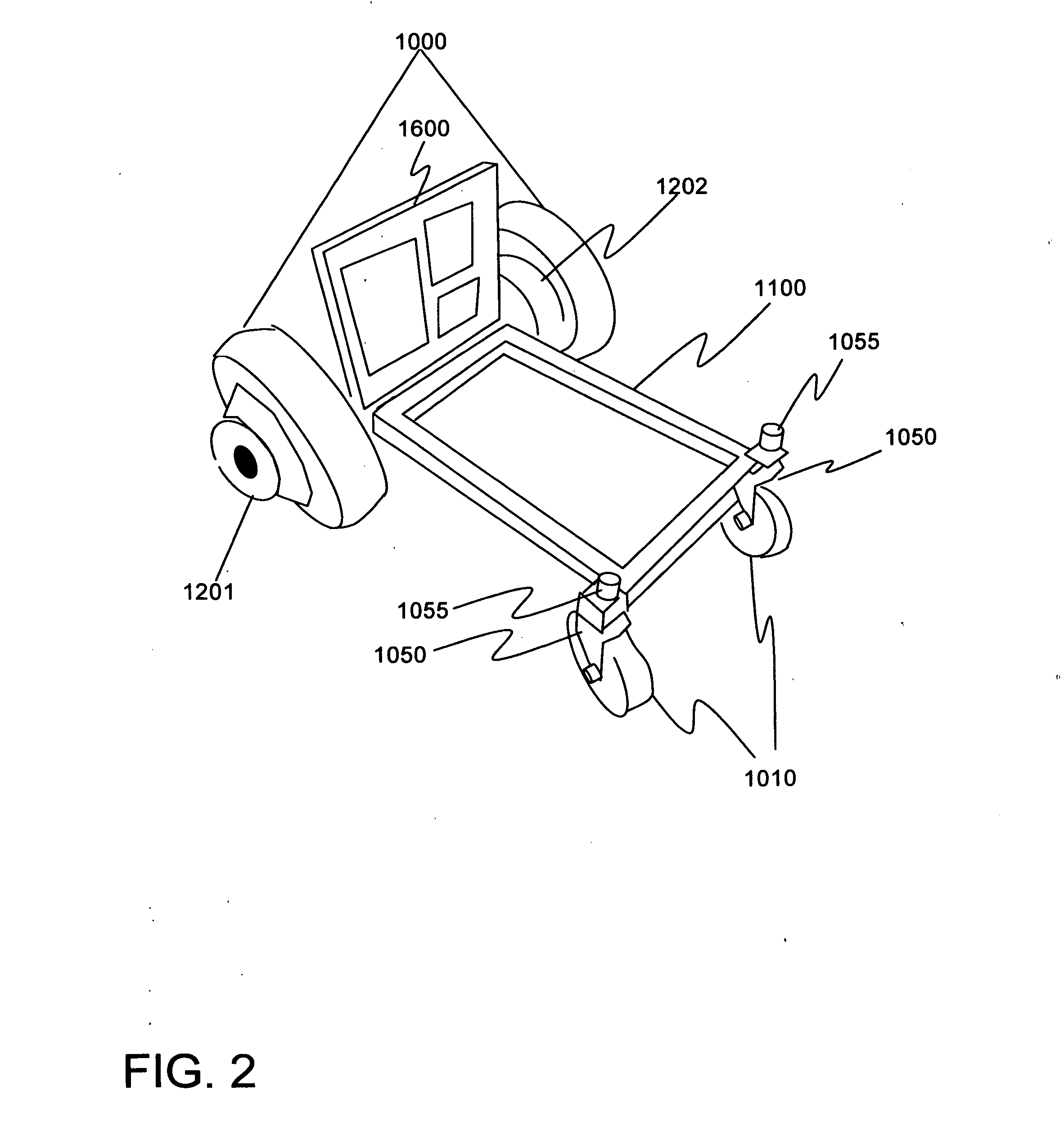Autonomous mobile platform for service applications
a mobile platform and service application technology, applied in the direction of distance measurement, instruments, using reradiation, etc., can solve the problems of not being able to move independently, not being programmable, and only responding to the situation
- Summary
- Abstract
- Description
- Claims
- Application Information
AI Technical Summary
Benefits of technology
Problems solved by technology
Method used
Image
Examples
first embodiment
II. the Invention
[0048]Shown in FIGS. 1-5 are aspects of a first embodiment of the invention.
[0049]As illustrated in FIGS. 1 and 2, this embodiment comprises a base unit 100 that comprises a chassis 1100 supported by two front wheels 1000 and two rear wheels 1010. As presented here, the rear wheels have an attachment mechanism 1055 (such as a bolt) that secures a caster-like mechanism that allows the rear wheels to pivot, allowing a change in direction. This mechanism may comprise a fork 1050 supporting an axle 1060 with bearings that passes through the wheels 1010. The rear wheels 1010 can be manufactured from any number of materials known to those skilled in the art, such as a low durometer plastic or a plastic rim with a synthetic rubber or polyurethane tire as the outer surface.
[0050]The front wheels 1000 in this embodiment are larger than the rear wheels 1010, and each front wheel 1000 has its own individual fixed axle with screw threads machined into the axle, and is attached ...
PUM
 Login to View More
Login to View More Abstract
Description
Claims
Application Information
 Login to View More
Login to View More - R&D
- Intellectual Property
- Life Sciences
- Materials
- Tech Scout
- Unparalleled Data Quality
- Higher Quality Content
- 60% Fewer Hallucinations
Browse by: Latest US Patents, China's latest patents, Technical Efficacy Thesaurus, Application Domain, Technology Topic, Popular Technical Reports.
© 2025 PatSnap. All rights reserved.Legal|Privacy policy|Modern Slavery Act Transparency Statement|Sitemap|About US| Contact US: help@patsnap.com



